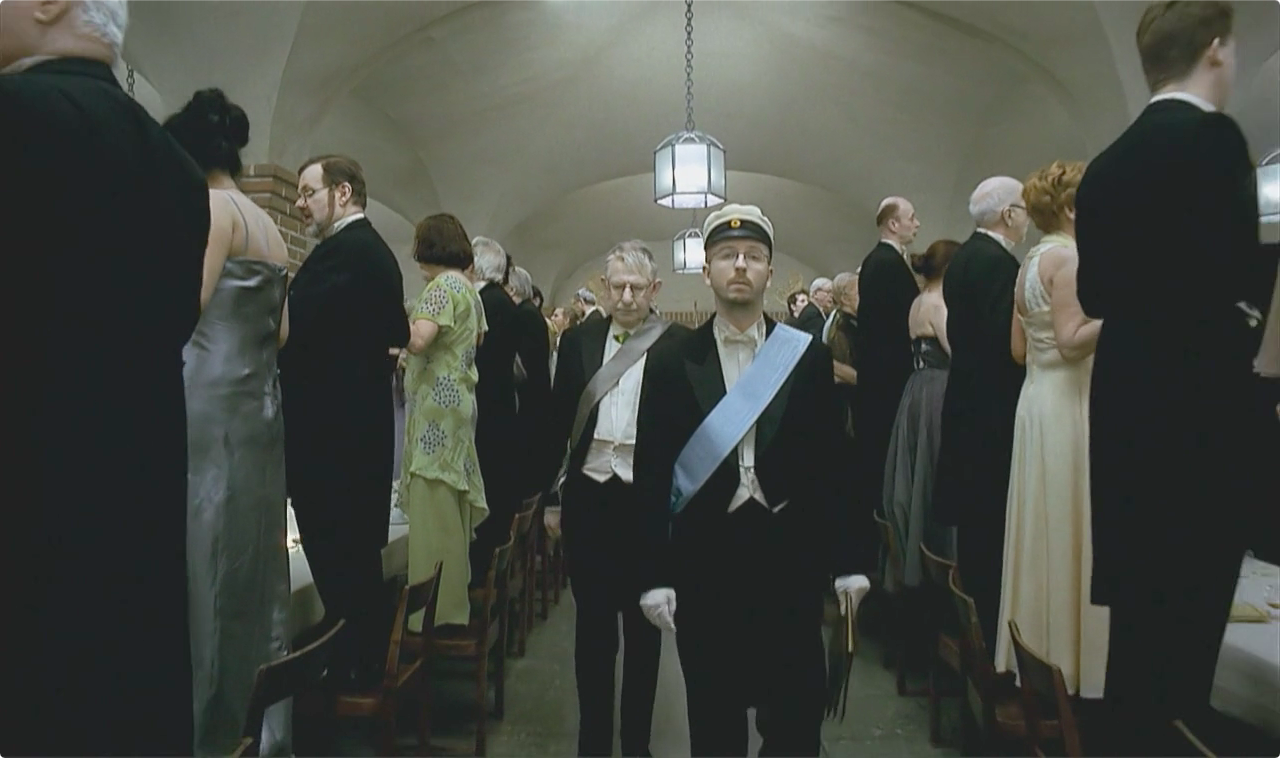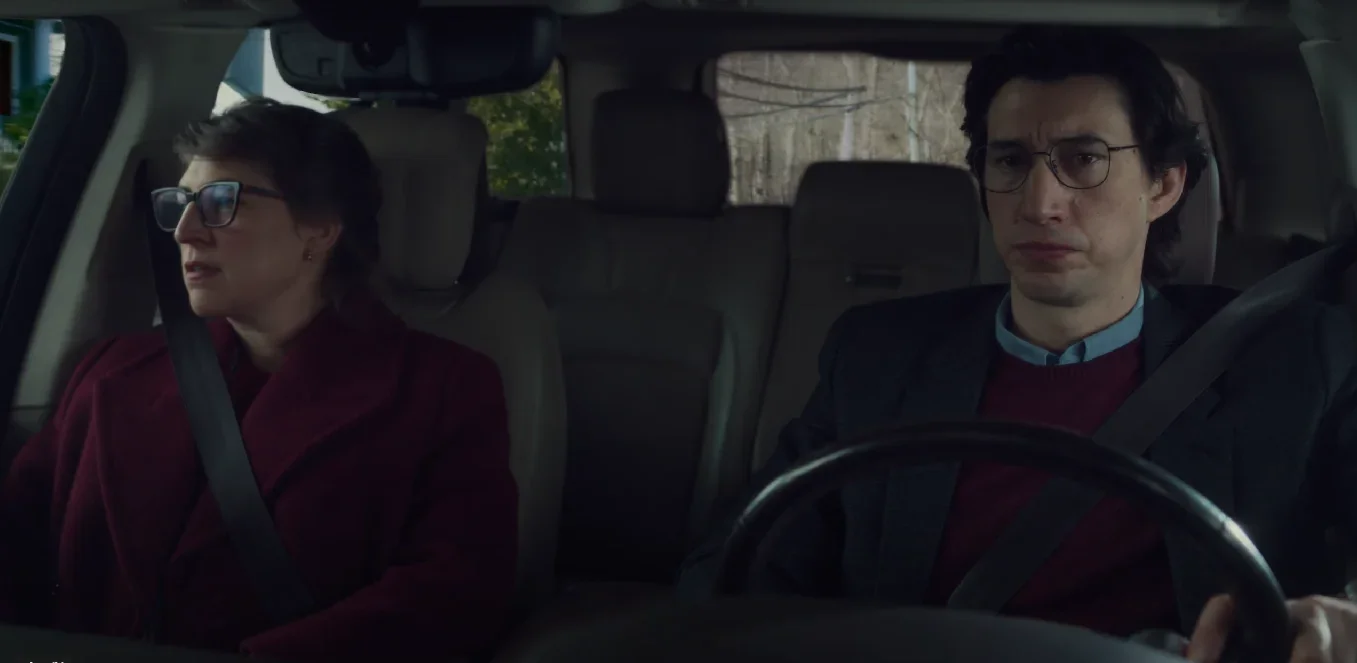‘You, The Living’ REVIEW: Apathy as Overcomplicated Art
‘You, The Living’ REVIEW: Apathy as Overcomplicated Art
A waiter walks down an aisle of standing customers.
The scene is a pale white office room. It is morning. Enter a man sleeping on his couch. He wakes up to the sound of a train arriving at a station nearby. In response to this loud cavalcade of noise, the sleeping businessman wakes up and declares to the audience via a fourth wall that he dreams of arriving bombers.
To first-time watchers of Roy Andersson, anything that concerns his body of work since Songs From The Second Floor will feel totally alienating. The persistent use of static shots, actors padded with layers of foundation, and an unusually deadpan approach to expressing humor, philosophy and mysterious aerial events can totally throw unseasoned cinephiles off course. You, The Living at the very least makes this easy by coaxing its audience with a seemingly interconnected, yet distinct series of vignettes that more or less show its audience how absurd and quirky Roy Andersson’s worlds can be.
The film, for the lack of a better word, is plotless. After being treated to the businessman, the film proceeds to trudge through a series of characters ranging from a struggling married couple, a saxophone player, a girl yearning for her rockerboy idol, a carpenter having nightmares about broken china vases, and plenty of other stories. The way Andersson treats each of these vignettes is to superimpose them with each of their unique flavors of comedy. It’s supposed to show how ridiculously self-absorbed characters in life are, and how uncaring people seem to be in response.
The effect feels like something that is largely mixed. In the process of expressing this constant stream of apathy, the film relegates itself to sometimes feeling like a regurgitation of its absurd ideas to the point that they feel either stale, unconvincing, or passé halfway through. While I can’t say this applies to all the scenes of this film, the film does leave such a lasting impression that it defines a good amount of it.
Anna (Jessika Lundberg) reflects on a missed date.
The whole point of You, The Living seems to be about how subtly wicked humanity can be in a rather sordid word. The way that society is so self-absorbed with their own transgressions to the point that it almost feels like a standard for existing. The film elicits these symbolisms of monotony and obligation through a strong amount of visual staleness. There is a frequent scene of the bartender calling for last orders; people congregating towards certain floors in an office building; these elements do not feel the least bit disturbing thanks to the set design. It certainly pays off considering the film’s tumultuous production period and the hefty amount of cash that the team had to source just to make the film’s set pieces come to life.
The thing with Roy Andersson’s contemporary works is that they are subtly exaggerated expressions of today’s world. It’s no wonder that in order to execute this idea, they pooled in a large number of non-actors to play roles that represent citizens of this exaggerated city. It’s actually impressive considering how intentionally flat, yet equally humane they all feel in their space. Being bunched together with the film’s dreary aesthetics and shadow-less lighting makes them like Roy’s own iconic version of zombies.
A couple stare outside, past the rain.
But in spite of this creative stroke that defines Roy Andersson’s works, what You, The Living remains to champion is one that is still uneasy for anyone because of its inherent structures. The film ends on an ambiguous note. There is no clear fate or closing remark for many of its characters introduced throughout. The ominous feelings that dictate this film’s tone and pacing still leave a lot to be desired as far as style and substance are concerned.
In an ironic twist of fate, this film ends up feeling apathetic with all its overcomplications.
















